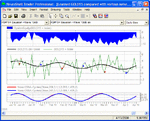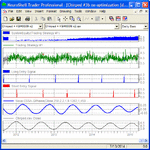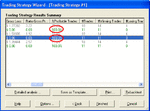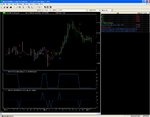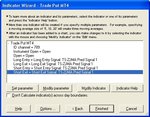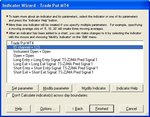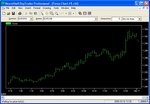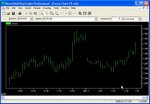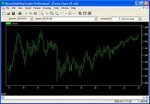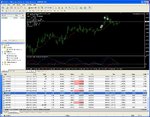My comments regarding your posts #531 and #536 on forex.tsd
With all due respect, your results are not conclusive and VERY MISLEADING to say the least. You’ll have to explain the readers of this thread why (I quote you) CSSA is “definitelly worse” than MESA!!!
Your post#531:
Trading Strategies Based On Digital Filters - Page 54 - Forex Trading
>> Here is comparision to NOXA results on the same signal. They hit 100% on
>> clean CHIRP signal, 72.2% on _2 and 90.9% on _1.
>> So definitelly worse even that it is curve fitter type. Can you make it also on GOLD5 ??”
100% HITS IS NOISE FITTING:
1. You definitively cannot use %profitable trades as you cannot use a change in PF as you did in the past to compare indicators and assess the quality of a system unless it is statistically correct. My point relates to the noise artifact I already touched on (read post#166):
http://www.trade2win.com/boards/software/29736-noxa-indicators-neuroshell-21.html#post670462
As you can see in the graph below (left graph), a trade from a perfect entry signal can be a looser when snr is lower than 0dB (0dB means as much noise as signal). In fact the odds that it looses are 50% when the noise is uniform. Since we are dealing with -16dB in this example (at its lowest, -16dB means 6.3 times more noise than signal) and only 11 trades, it is very unlikely that they can be all winners unless there is noise fitting. I have attached another example where all trades loose even though they are nearly perfect (GOLD15 + noise, snr = 13dB). They loose because of noise artifact, not because of bad entry signals.
Another point I want to make: you certainly cannot make such bold statement based on only a couple of noise trials. You need a full factorial DOE.
YOU COMPARE APPLES AND ORANGES
2. You do not compare MESA with CSSA but digital filtering + MESA with CSSA (correct me if I am wrong). We know that because MESA performs poorly under high noise condition this additional filtering step was necessary which unfortunately introduces lags.
3. MESA results were obtained in-sample while CSSA results were given out-of-sample.
YOU TOOK CSSA RESULTS OUT OF THEIR CONTEXT
4. MESA results were obtained on noisy signal directly while CSSA was trained on noise free signal first and tested against noise after adding noise to it.
BACKWARD CURVE FITTING OCCURRED WITH MESA
5. The setting for MESA was adjusted during noise comparison: max_period was changed from 140 to 800 to accommodate for the increased noise (noise 2). The setting with Noxa remained unchanged. Wasn’t that your preferred argument when trying to bash CSSA? Backward curve fitting!! I am very surprised that you did not report it!!
Your post #536:
Trading Strategies Based On Digital Filters - Page 54 - Forex Trading
>> so it looks that in this competition MESA won, 2nd NOXA and third GOERTZEL as a clear underperformer.”
Let me redo the test the way it was done with MESA; no training, just manual setting on noisy signal directly (third and bottom graphs, chart attached). See what happens! Let me use your colored terms:innocent:: Results IMMEDIATELY jump to 100% on both noises. I did not even need to change the parameters between the two noise levels. Should I conclude that CSSA is now as good as MESA or better?
More seriously, the only information I can use from these experiments to compare MESA with CSSA is the quality of the cycles they both produced. With MESA, cycles lag and can be noisy whereas cycles from CSSA remain smooth and timely.
Noxa


